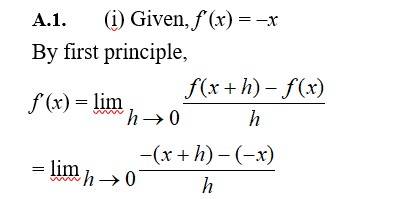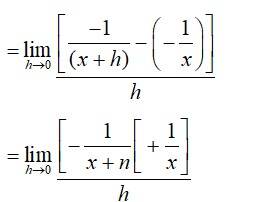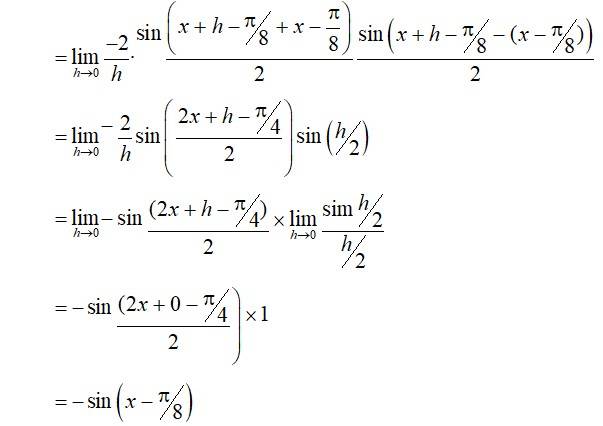Limits and Derivatives
Get insights from 93 questions on Limits and Derivatives, answered by students, alumni, and experts. You may also ask and answer any question you like about Limits and Derivatives
Follow Ask QuestionQuestions
Discussions
Active Users
Followers
New question posted
6 months agoNew answer posted
6 months agoContributor-Level 10

= - 1.
(ii) Given, f(x) = (-x)-1
by first principle,
f(x)

(iii) Given, f(x) = sin(x + 1)
By first principle,
f'(x) =
= cos (x + 1)
(iv) Given, f(x) = cos
By first principle,
f(x) =

New answer posted
6 months agoContributor-Level 10
. (i) f(x)=sin x cos x
So,
So,
(iii) Given f(x)=5 sec x+4 cosx.
So,
(v) Given,f(x)=3 cot x+5cosecx.
So,
New answer posted
6 months agoContributor-Level 10
(i) f(x)=sin x cos x
So,
So,
(iii) Given f(x)=5 sec x+4 cosx.
So,
(v) Given,f(x)=3 cot x+5cosecx.
So,
New answer posted
6 months agoContributor-Level 10
41. (i)
=2.
(ii) Given, f(x)=
So,
=
(iii) Given, f(x) =
So,
(iv) Given, f(x)=
=
(v) Given, f(x)=
So,
(vi) Given, f(x)=
So,
New answer posted
6 months agoContributor-Level 10
(c) Given, f(x)=(x-a)(x-b)
where a and b are constants.
So,
=(x-a)+(x-b)
= 2x– a- b.
(ii) Given f(x)= where ab are constant
So,
=
=
(iii) Given, f(x)= where a and bare constants
So,
Taking an Exam? Selecting a College?
Get authentic answers from experts, students and alumni that you won't find anywhere else
Sign Up on ShikshaOn Shiksha, get access to
- 65k Colleges
- 1.2k Exams
- 679k Reviews
- 1800k Answers
